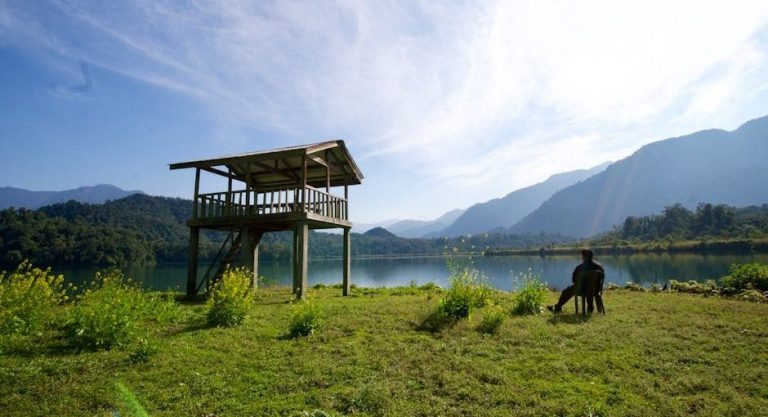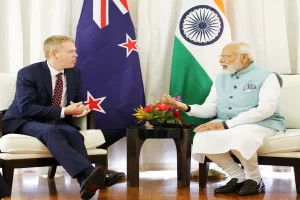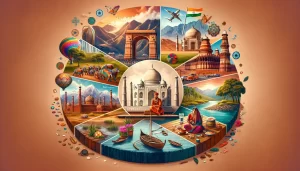Introduction to Traveling in India: A Land of Diversity and Beauty
India welcomes you with a kaleidoscope of sights, sounds, and smells unlike anywhere else. Imagine stepping into a world where every corner offers a new adventure, every meal is a feast of flavors, and every face tells a story. This country isn’t just a place; it’s an experience. From the snowy peaks of the Himalayas in the north to the sun-kissed beaches of the South, India’s landscapes are as diverse as its people. And oh, the people! You’ll meet folks so warm and welcoming, sharing stories and smiles freely. Then there’s the history – ancient temples, majestic forts, and cities that have watched the world change. Food? It’s a riot of tastes. Bold spices, sweet treats, and everything in between, every region boasting its own signature dishes. But remember, India is vast. It’s wise to start with a plan but let spontaneity guide you too. Dive into the chaos of the cities, then find peace in quiet villages. Let India show you its contrasts and charms. You’re not just visiting a country; you’re embracing a whole new world.
Best Time to Visit India: Seasonal Guide
Picking the best time to visit India hinges on what you want from your trip. India’s vast size means its weather can vastly differ from one region to another. Broadly, October to March marks the ideal window to explore most of the country, thanks to cooler temperatures and minimal rainfall. During these months, the weather is generally sunny and pleasant, perfect for sightseeing and outdoor activities. The Himalayan regions are best visited in the summer months of May to September when other parts of India are sweltering. This is the time trekking and mountain adventures are at their peak. On the flip side, if you’re looking to explore the southern states, aim for the winter months when the heat is more bearable. Monsoon season, from June to September, transforms the country, offering lush landscapes and revitalizing rains, which can be an experience in itself. However, heavy rains can disrupt travel plans. To sum it up, your best bet is to plan according to the region you wish to visit and the activities you’re interested in.
Essential Travel Tips for a Smooth Indian Adventure
Traveling to India is like stepping into a world filled with remarkable diversity and vibrant culture. To navigate this vast country smoothly, it’s crucial to keep a few travel tips in hand. First, always go for bottled water to avoid getting sick. The tap water in most parts of India might not be safe for foreigners. Next, bargain whenever you can. Whether it’s at local markets or with auto-rickshaws, haggling is part of the culture here. You might just get those souvenirs for half the price! Remember, trains are a great way to travel long distances, but be sure to book your tickets in advance. Trains are popular and fill up quickly. Also, keep your valuables close and be mindful of pickpockets in crowded places. Lastly, embrace the local food but start slowly to give your stomach time to adjust. Trying street food is a must, but do it cautiously. Armed with these tips, you’re set to explore India’s beauty and chaos with confidence.
Top Destinations to Explore in India
If you’re thinking about exploring India, you’re in for a real treat. From the snowy peaks of the Himalayas to the golden beaches of Goa, India is a land of diverse beauty and rich history. Let’s dive into some of the top destinations you can’t miss on your journey. First up, the Taj Mahal in Agra. It’s not just a monument but a symbol of love, recognized all over the world. Waking up early for a sunrise visit can give you the most stunning view, with fewer crowds. Then, there’s Jaipur, known as the Pink City. It’s part of the famous Golden Triangle tourist route. Don’t skip the Amber Fort and the Hawa Mahal. For those who love the mountains, Manali and Leh-Ladakh offer breathtaking landscapes and a touch of adventure with their trekking routes. Goa is your go-to for beaches and party vibes, a perfect spot to relax by the sea. Lastly, if you’re looking for spiritual enlightenment, Varanasi offers a deep dive into India’s religious heart, with its sacred Ganges River and centuries-old temples. Each of these places offers something unique, making India a mosaic of cultures, sceneries, and memories.
Discovering Indian Cuisine: What and Where to Eat
When you step into India, you dive into a sea of flavors that’s unparalleled. Indian cuisine is a riot of colors, spices, and tastes, each region offering something unique and unforgettable. North India is famous for its thick, creamy curries and fluffy naan bread. Dive into a plate of butter chicken or palak paneer. Moving to the West, you’ll find a world of sweets like jalebis and savory dishes like poha. South India will greet you with tangy sambar, fluffy idlis, and crisp dosas. The East? It’s a paradise for those who love sweets, think rasgulla and mishti doi. Street food is a big deal in India. Cities like Delhi, Mumbai, Kolkata, and Chennai have street food scenes that showcase the heart of Indian cuisine. Don’t miss out on chaat, momos, and local treats. For the authentic taste of India, local bazaars and street vendors are your best bet. Want something upscale? Every major city boasts restaurants showcasing India’s culinary diversity, from traditional dishes to modern fusion. Remember, eating in India is not just about filling your belly. It’s an experience that touches your soul. Explore, experiment, and enjoy the burst of flavors.
Navigating Transportation in India: From Trains to Tuk-Tuks
In India, getting from point A to point B is an adventure in itself. Firstly, trains are a lifeline here. They connect vast distances, from bustling cities to serene countrysides. Booking a ticket through the IRCTC app or website is straightforward, but remember, trains get packed fast, especially during the holiday season. Prices vary significantly based on class, from the basic sleeper to the luxurious AC tiers.
Next up, buses. Government and private buses traverse the length and breadth of the country. They’re cheaper and more flexible in scheduling than trains but prepare for a bumpy ride on rural roads.
For short distances within cities or towns, auto-rickshaws, famously known as tuk-tuks, are your go-to. They zip through traffic, offering a local experience like no other. Always agree on a fare before hopping in to avoid paying more.
Ola and Uber have also made their mark in India, providing a comfortable and air-conditioned alternative to public transport. The apps are user-friendly and the rides are reasonably priced.
Lastly, for those scenic routes where you wish to stop and soak it all in, renting a bike or scooter gives you the freedom to explore at your own pace.
Each mode of transport has its own charm and set of challenges, but that’s what makes traveling in India uniquely rewarding.
Cultural Etiquette: Do’s and Don’ts in India
When you travel to India, knowing the do’s and don’ts of cultural etiquette can make a big difference in how you’re received by locals. First off, always greet people with ‘Namaste,’ bringing your palms together with a slight bow. It shows respect. Dress conservatively, especially when you visit places of worship or rural areas. Shorts and sleeveless tops are often frowned upon.
In India, the left hand is considered unclean, so remember to eat, shake hands, and give or receive items with your right hand. Public display of affection, like hugging or kissing, is not the norm in India, so it’s best to avoid it.
When it comes to tipping, small tips are appreciated but not mandatory. Taxi drivers, small restaurants, and service-based places don’t expect huge tips, but a little something, at least 10%, can mean a lot.
Take off your shoes when entering someone’s home or a place of worship. It’s a sign of respect. Speaking of respect, always refer to elders with titles or ‘Sir’ or ‘Madam’.
Finally, patience is key. India can be crowded and sometimes things don’t go as planned. Stay calm, enjoy the journey, and embrace the chaos. Remembering these simple do’s and don’ts will enrich your experience and help you blend in with the local culture.
Safety Considerations While Traveling in India
Traveling to India comes with its own set of safety considerations that you need to keep in mind for a smooth and secure journey. First off, it’s essential to stay informed about the areas you plan to visit. Some parts of India experience political unrest and natural hazards more frequently. Check the latest travel advisories and talk to locals for real-time insights. Next, be mindful about personal belongings and avoid flashing expensive items in crowded places to not attract pickpockets. When it comes to food, stick to freshly cooked dishes and bottled water to avoid any stomach upsets. India’s traffic can be chaotic, so be extra cautious when crossing the streets or opting for road travel. It’s better to use reputable transportation services. Lastly, respect local customs and dress modestly to blend in and avoid unwanted attention. Keeping these points in mind, you can navigate through India more safely and enjoy the rich experiences the country has to offer.
Budgeting Your Trip: Costs and Savings Tips
Traveling to India doesn’t have to empty your wallet. With smart planning, your trip to this vibrant country can be quite affordable. Let’s break it down. First off, the time of year you visit can greatly affect your costs – aim for the shoulder seasons, which are from September to November and February to April. You’ll avoid the peak tourist prices and still enjoy good weather. Next, transportation within India varies, but trains and buses are your friends for long distances, offering the perfect balance of cost and experience. For city travel, rickshaws and ride-sharing apps can save you a ton.
Accommodation wise, hostels and guesthouses are the way to go for budget travelers, with prices dramatically lower than hotels. Eating like a local not only gives you a taste of authentic Indian cuisine but also keeps your wallet happy. Street food, local eateries, and thalis are both delicious and affordable. Lastly, when visiting attractions, always check if there’s a different price for foreigners and explore discount options for students or groups. Remember, India is rich in free experiences – from mesmerizing temple ceremonies to bustling market walks. Keep these tips in mind, and you’ll find that experiencing the beauty of India can be surprisingly cost-effective.
Final Thoughts: Making the Most of Your Indian Journey
Faqs
Which is a famous place in Amritsar?
The Golden Temple is the most famous and bustling place in Amritsar.
Are 2 days sufficient for Amritsar?
Yes, 2 days can be sufficient for a Amritsar trip if you want to witness the historic and cultural hot spots in the city.
How many places to see in Amritsar?
Amritsar has a lot of iconic landmarks including Golden Temple, Ram Tirath Temple, Shri Tarn Taran Sahib Temple, Sadda pind, and Dukh Bhajani Beri, among others.
What is there to eat in Amritsar?
Amritsar offers some of the popular cuisines such as Amritsari kulcha, lassi, make di roti & saag, and chole puri, among others.
Is Amritsar safe to visit at night?
Yes, places like the Golden Temple, Sadda pind, Ram Tirath Temple, etc. are absolutely safe to spend time with friend or family at night.
For further inquiries or assistance related to travel, flight booking or accommodation, feel free to contact Mann Travel Canada. Our dedicated and lively team is there to cater to all your travel needs ans ensure a seamless journey to Amritsar.
Phone number : (604) 265-9000
Email address: support@manntravel.ca






